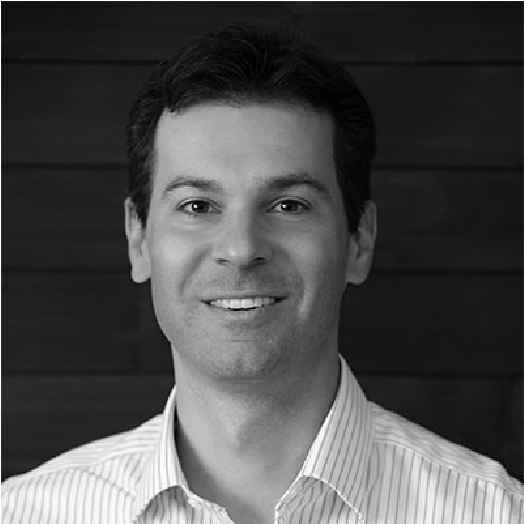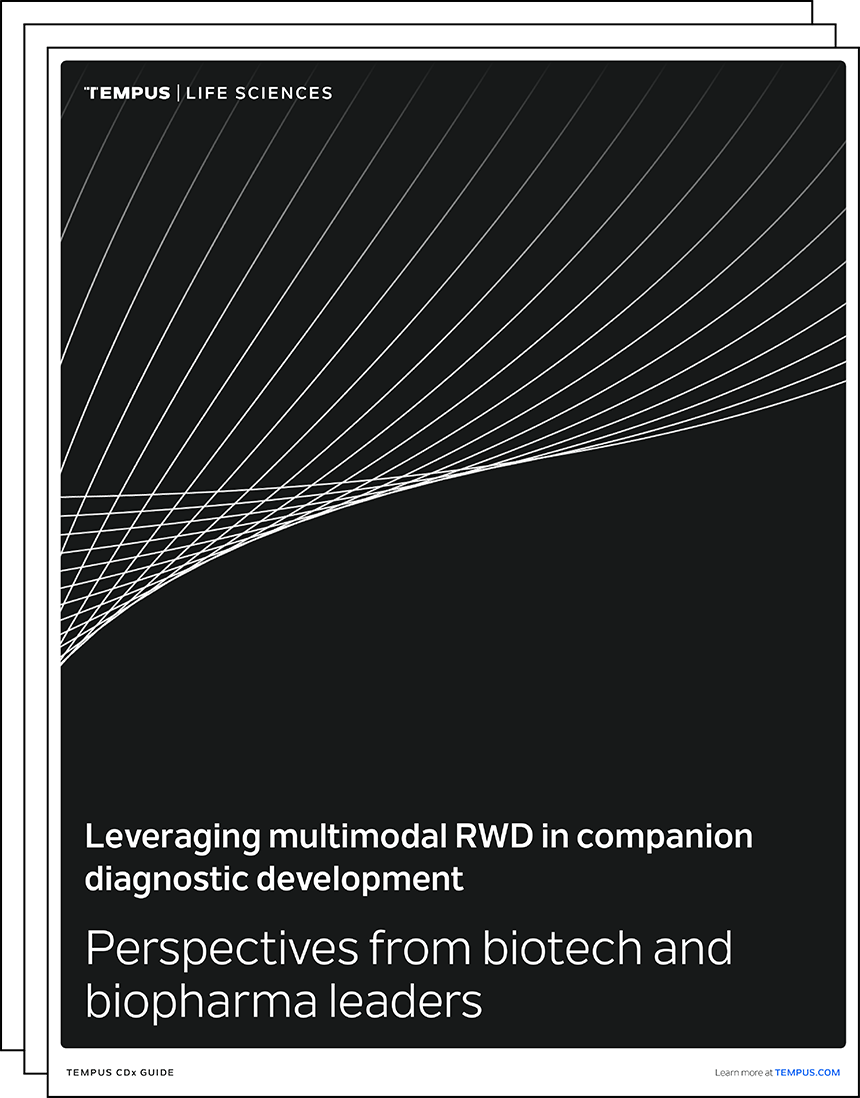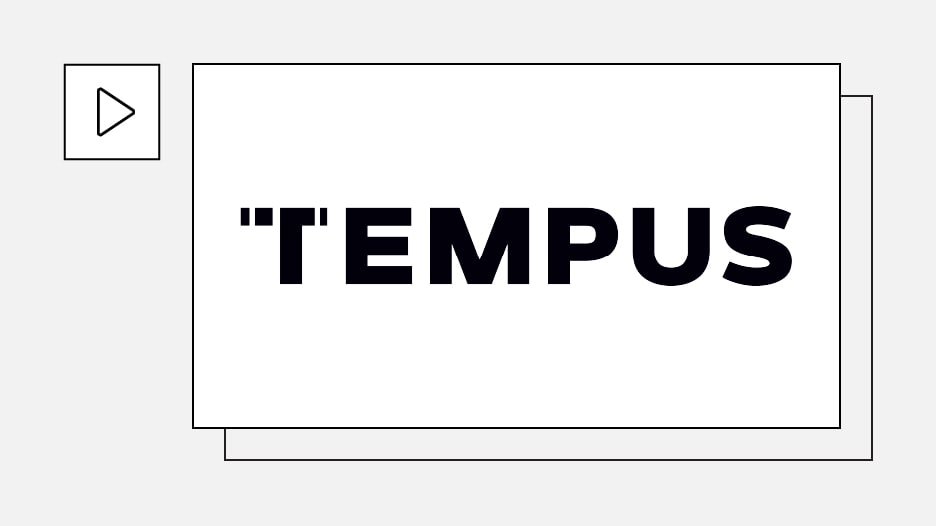-
PROVIDERS
Watch now
Are you getting the full picture? A webinar series on the power of comprehensive intelligent diagnostics
-
LIFE SCIENCES
REGISTER NOW
Closing Care Gaps with AI: The Next Competitive Edge in Pharma
Monday, July 14
9am PT, 11am CT, 12pm ET -
PATIENTS
It's About Time
View the Tempus vision.
- RESOURCES
-
ABOUT US
View Job Postings
We’re looking for people who can change the world.
- INVESTORS
12/08/2022
Advancing immuno-oncology with real-world data
Discover how TScan uses RWD to power companion diagnostic and drug development and ensure the right patients are involved in their clinical studies.
Authors
Michael Yasiejko, MBA
General Manager and Executive Vice President, Tempus

Gavin MacBeath, PhD
Chief Scientific and Operations Officer, TScan

General Manager and Executive Vice President, Tempus

Gavin MacBeath, PhD
Chief Scientific and Operations Officer, TScan

This article is part of our series on innovative approaches to companion diagnostic development. See here for other pieces in the series, and stay tuned for the next article in which we explore how our peers and collaborators are working to advance data-driven precision medicine.
As cancer treatments have become more targeted in recent years, biotech and pharmaceutical companies have increasingly seen the benefit of supporting the development of targeted therapies that rely on companion diagnostics. This approach ensures that clinical trials will enroll patients that meet a specific molecular profile. A targeted approach helps companies generate more compelling evidence to regulators because trial designs have been optimized to identify participants more likely to respond to their product. Developing companion diagnostics capabilities requires advance planning and can be enhanced by use of real-world data (RWD), and it underpins TScan Therapeutics’s development strategy for diagnostics and therapeutics.
TScan was founded in 2018 on a breakthrough technology which enables the company to discover the targets of immune receptors, known as T-cell receptors (TCRs), then use that information to build T cell receptor-engineered T cell (TCR-T) therapies that help a person’s immune system fight hematologic and solid tumor cancers.
Gavin MacBeath, PhD, Chief Scientific and Operations Officer at TScan, spoke with Michael Yasiejko, MBA, General Manager and Executive Vice President at Tempus, about the ways Tempus’s genomic RWD informs TScan’s approach to companion diagnostic and drug development, and the importance of incorporating genomic data early in the development cycle. Dr. MacBeath also shared advice for other biotech and biopharma organizations as they design clinical trials for highly targeted therapies.
Responses have been edited for clarity and length.
Mike: Thanks for joining me today to discuss data-driven CDx development and how the advent of structured multi-modal data can support innovative programs that will ultimately bring more options to patients. To start, can you please share a brief description of your career background? |
| Dr. MacBeath: I performed my PhD research on the interface between chemistry and biology at the Scripps Research Institute in La Jolla, California, and then post-doc’ed with Stuart Schreiber at Harvard University. When Stuart co-founded the Center for Genomics Research at Harvard in 2000, I was hired as the first fellow to start an independent program at the Center. Two years later, I was hired by the Department of Chemistry and Chemical Biology at Harvard as tenure-track faculty.
Over about seven years I built my own lab at Harvard. During that time, I co-founded Merrimack Pharmaceuticals, and in 2008 I moved full-time to Merrimack, leading translational research to drive our lead products through phase 2 clinical development. Ultimately, the U.S. Food and Drug Administration (FDA) approved Merrimack’s drug for pancreatic cancer, ONIVYDE®. I left Merrimack in 2016 to work in immuno-oncology. I was the chief scientific officer of an antibody company developing T-cell-engaging bispecifics and then, in 2018, I joined TScan Therapeutics as their CSO. |
Mike: How do you integrate different modalities of data to inform clinical development programs? What challenges have you faced in doing so? |
| Dr. MacBeath: There is an interesting challenge on the horizon: If every company in the world is moving in the direction of precision medicine, and everyone develops their own companion diagnostic, then every patient will be subject to tons of different diagnostic assays developed by tons of different companies. That’s unworkable. We’re increasingly going to need platforms that span many of the different companies and biomarker assays.
Genomics-based testing is the most obvious platform to standardize across different companies. If a single assay – such as a genomic sequencing or RNA-seq assay – can provide information on hundreds of biomarkers, we can ease the burden on patients and providers. Using platforms like Tempus’s, providers can perform a single assay to define which currently available drugs are appropriate for a patient’s treatment. What we’re doing with Tempus is unique because we’re looking for information that’s not currently in the list of readouts you get from next-gen sequencing of a tumor, but something that’s extractable from these standard assays. Tempus is helping us develop a custom pipeline to extract information from standard tests that we need to guide TCR-T therapy development, including loss of heterozygosity at the HLA locus. |
Mike: How do you balance the needs of your organization, providers, patients, and others as you navigate the drug development and diagnostic lifecycle? |
| Dr. MacBeath: In drug development, there’s always tension between selecting the right patients for a study and moving quickly. Many large companies err on the side of over-emphasizing speed and so dispense with biomarker-driven patient selection. Pre-selecting patients using novel biomarker assays will, by definition, slow enrollment.
Most often, biotech companies, particularly early-stage companies, focus first on selecting the right patients. Because biotechs are judged by the success or failure of their first clinical program, it’s important to ensure that every patient who enters a trial has the highest probability of benefiting from the therapy – especially in cases where a lower number of patients are likely to respond. It’s a balance between moving quickly and getting things right. And it’s in the interest of both the patient and the biotech company to ensure the maximum possible chance of responding in those early-stage trials. |
Mike: What is TScan’s companion diagnostic strategy? What has informed your approach and efforts to advance companion diagnostics? |
| Dr. MacBeath: We deliver customized multiplexed TCR-T therapies for patients. In order to do this, we must co-develop companion diagnostics. We need to pre-screen patients to ensure that their tumors express the target that the TCR recognizes, but also that the human leukocyte antigen (HLA) – a type of molecule that helps a person’s immune system defend against cancer – is still intact in the patient’s tumor.
We’ve discovered recently through published RWD studies that there is a significant amount of HLA loss in solid tumors. So, if you don’t test for the presence of the HLA – and many companies don’t – you could risk giving a patient a TCR-T therapy that has no chance of benefiting them. We work with Tempus to develop assays that would test directly for whether the patient’s tumor has undergone HLA loss or not. |
Mike: Can you share examples of how you use RWD to inform development? |
| Dr. MacBeath: As we define what targets to pursue in our therapeutic programs, we’ve relied on RWD to understand the prevalence of those targets among different patient populations. For example, one target in our pipeline is PRAME, a cancer/testis antigen that’s expressed in 90% of all patients that have melanoma and in 50% of all patients that have non-small cell lung cancer. We’ll target these cancer indications in our initial phase 1 studies, because we know they have the most prevalent expression of PRAME.
On the HLA side, we have a myriad of data around HLA prevalence in different patient populations. Understanding the most prevalent HLAs defines which drug development programs we have at TScan and how best to combine them in early-stage trials. The only way to detect HLA loss of heterozygosity is with genomic sequencing; there is no obvious alternative. |
Mike: How did you evaluate precision medicine partners and choose a collaborator for your projects? |
| Dr. MacBeath: We wanted to work with a company that had a large footprint in clinical genomics testing. We needed someone with established next-gen sequencing assays that are currently used in hospitals. That way, their assays will be easy to integrate into standard practice if our programs are successful. We also prioritized a willingness to develop custom pipelines for analyzing those data. This led us to Tempus. |
Mike: What advice do you have for other biopharma companies as they consider a data-driven approach to diagnostic and drug development? |
| Dr. MacBeath: You need to commit to using data at an early stage and believe in your understanding of the biology of your drug.
We also need better education around how to develop novel assays in early-stage drug development, and what to expect during the regulatory process for using novel assays in early-stage drug development. For example, people are wary of filing investigational device exemptions (IDEs) for drug development for novel assays while they’re working to file their first investigational new drug (IND) applications with the FDA. In our experience, the FDA often doesn’t require an IDE for a novel assay as many assays, if developed and applied correctly, don’t pose a significant risk to the patient. There are other elements to the process that they need to know as well – for example, expect fairly long development cycles as you qualify a novel assay prior to starting a clinical trial. Despite the long timelines today, the more routine this process becomes, the more it’ll benefit the industry. Young companies filing for their first drug are mainly focused on ensuring all steps in the development and regulatory process happen on time. It can seem daunting to layer a novel assay and patient selection strategy onto the process, as well as selecting an appropriate diagnostics partner. But if you don’t do it, you’re doing a disservice to patients and to your drug, which won’t look as compelling to regulators if the studies include patients with no chance of benefiting from the product. |
Mike: What else should pharma companies consider as they navigate drug and diagnostic development? |
| Dr. MacBeath: It’s important to consider the sample you’re working with. It’s easy to rely on archived tissue for patients in order to perform assays. But, in many cases, the archived tissue was collected when a patient was first diagnosed with cancer, maybe five to ten years ago, and now it’s being used for a late-stage patient signing up for a clinical trial.
The industry needs to get used to mandating pretreatment biopsies in a phase 1 protocol. We’re trending in this direction; physicians are more willing to ask for a biopsy for their patient because there are a lot of targeted therapies they can suggest based on the results of genomic assays. Getting the appropriate sample is key, because tumor biology changes over time. Biomarkers that may have been present ten years ago may not be relevant for the patient today. It’s important to think ahead, plan early, and prepare to give yourself options. |
Learn more

Learn more
Leveraging multimodal RWD in companion diagnostic development
Perspectives from biotech and biopharma leaders
DOWNLOAD GUIDEStay informed
Be notified whenever Tempus publishes new and relevant research, webinars, and other resources.
Sign up-
07/01/2025
Transforming R&D with Generative AI and Real-World Data
Mike Yasiejko, General Manager and Executive Vice President at Tempus, recently spoke with Andrew Mazar, PhD, Chief Operating Officer at Actuate Therapeutics, about the ways Tempus’ liquid biopsy (xF+) and methylation assays have been valuable to Actuate’s work and how the company has benefitted from the partnership
Watch now -
06/12/2025
AI & ML in action: Demonstrating real-world impact in trial design & patient care
Discover how the Tempus platform leverages AI and ML to inform standard of care practices through health equity guidelines and drive insights that help refine clinical trial design. Engage with live demonstrations showcasing how our tools identify patients by modifying inclusion/exclusion criteria and leveraging patient queries. Explore how our tools integrate NCCN guidelines and empower life science teams to access current, actionable patient-journey insights. Learn how these real-world applications can drive progress in your clinical development initiatives.
Watch replay
Secure your recording now. -
06/09/2025
Bridging the translational gap: The role of organoids in oncology R&D
This white paper explores the evolving role of organoids in oncology R&D, highlighting their potential as predictive preclinical models and their ability to reduce translational risk. Download for a comprehensive overview of the scientific landscape, key adoption barriers, emerging innovations, and how pharma companies leverage organoids to accelerate precision medicine.
Read more


